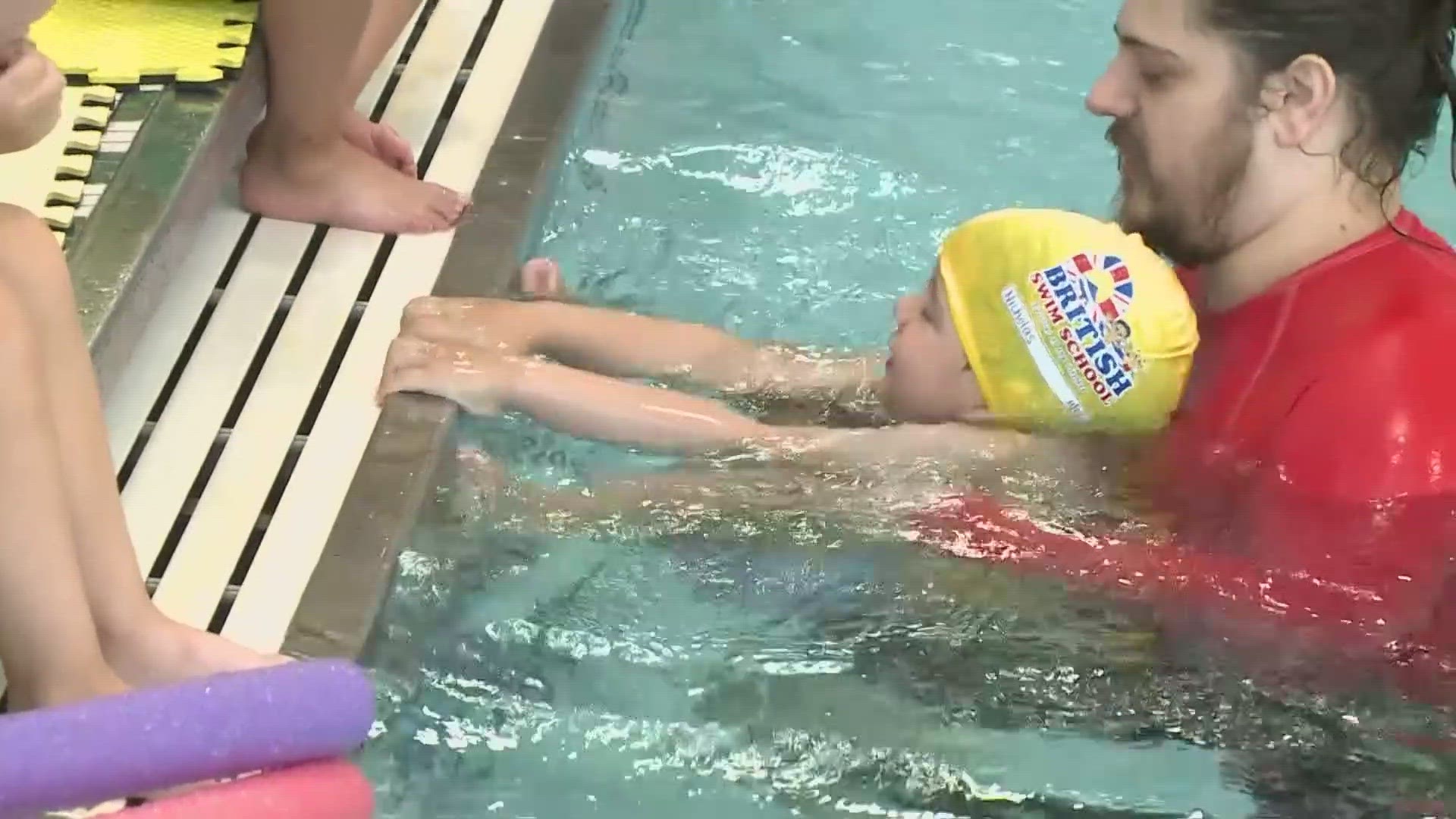ST. LOUIS — Drowning is the leading cause of death for children ages one to four. A recent study found children with special needs are at an even higher risk.
The Autism Society of Florida released a study that found kids on the spectrum are 160 times more likely to drown than kids who are considered neurotypical.
Our ‘Today in St. Louis’ team met with a swim instructor who shapes his lessons to fit the unique needs of all his students.
Tyler Smallwood is a swim instructor with St. Louis-based, British Swim School. Smallwood spends hours in the water each day to ensure all kids can swim safely. “There’s a lot of trust that you have to build up.”
He tells our reporter, “A lot of kids that come in are afraid of the water already. That doesn’t really change with kids who have special needs. If you know how to work through that with kids who are neurotypical, you can usually work through that with kids who have special abilities.”
The Children’s Safety Network reports children with autism spectrum disorder (ASD), Down syndrome, heart disease and seizure disorders (like epilepsy) have a greater risk of drowning.
The National Autism Association reported drownings lead to 91% of deaths for children on the autism spectrum 14 and younger.
British Swim School is working to ensure kids of all abilities can swim safely.
Smallwood says, “Most of our kids who have special abilities are actually part of our regular curriculum.”
The swim school’s new Dolphin program will cater specifically to kids with special needs.
Smallwood says, “We’re looking to find parents of kids with special needs who don’t feel comfortable joining those regular classes and they feel their student needs extra attention. We’re looking to recruit those students for that program so they can have one-on-one lessons-- some, at a reduced cost.”
Smallwood says communication is key in his swim lessons,
And he speaks through song to teach students who have trouble communicating verbally.
Smallwood explains, “It helps them feel familiar in that environment and they know what is coming next if there’s a song attached to an activity. Lots of singing. Lots of swim aids, noodles, things like that. Sometimes I need to adjust my body positioning with a child to make them feel more safe and less vulnerable in the water.”
British Swim School teaches kids of all abilities to, at first float, then later swim to safety.
Sensory and stimulation sensitivities present another challenge for swim students who have special needs.
Smallwood says patience and flexibility are key for instructors. He adds, “There are plenty of kids who are really scared of putting their face underwater. Maybe putting their face underwater isn't something we need to focus on that day. Maybe we can use a kickboard or something like that. We can do a special activity using the arms. Building the muscle memory of doing the strokes before actually dealing with that super stimulating feeling of getting water on the face."
Learning a new skill can be scary for anyone. But, Smallwood says, most times it's the parents who are really feeling the nerves during the initial swim lessons.
“They’re worried,” he says. Smallwood adds, “A lot of parents don't see that patience in their day-to-day lives with their children and it’s very frustrating. So, when they do encounter that instructor who takes the time to adapt to their kid, listen to their kid, listen to their advice… the gratitude is immense.”
Tyler Smallwood says he feels grateful to parents for their trust, and pride when his students swim on to success.
Smallwood tells our reporter, “You start to care for these kids a lot seeing them day to day. Yeah, it’s just a very special feeling.”

